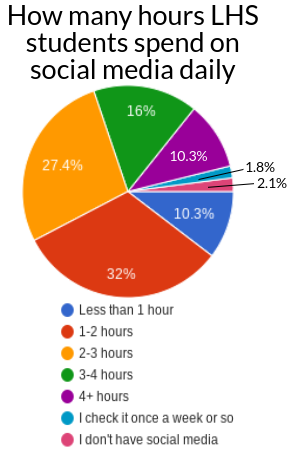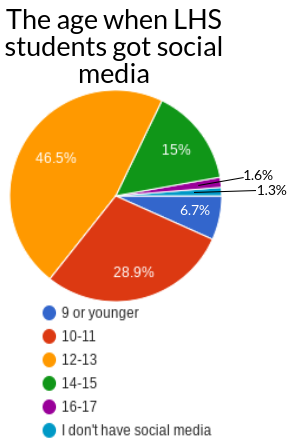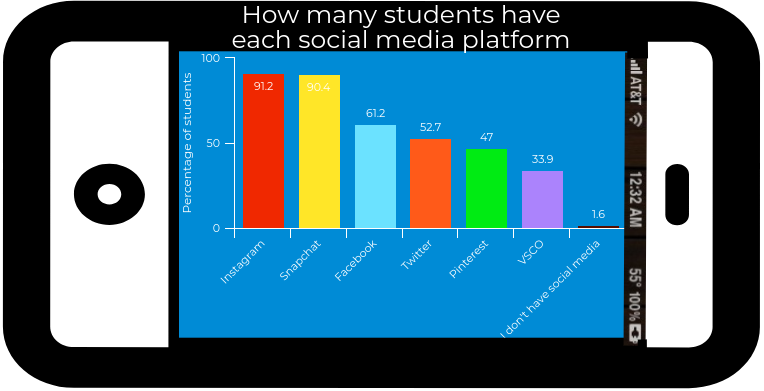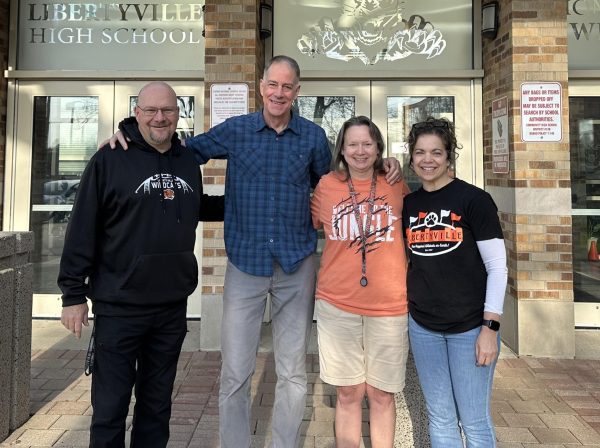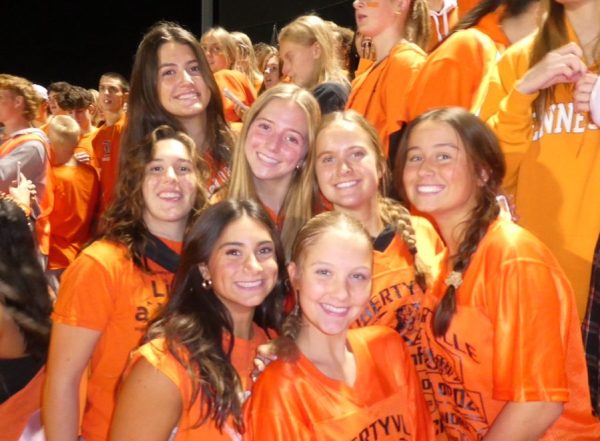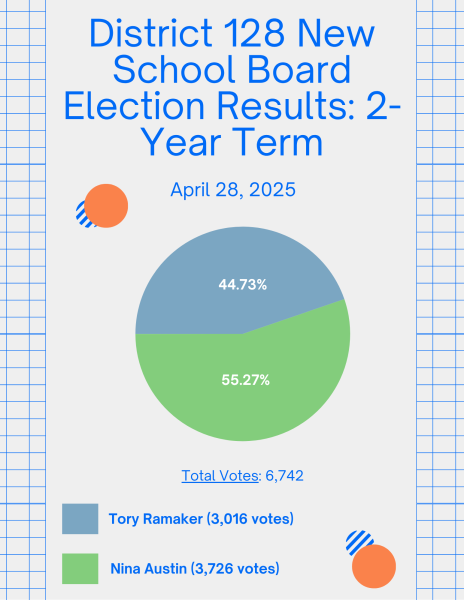The Power of Social Media
Buzz! Ding! For the 20th time today, your phone goes off with the same notification you’ve gotten for over an hour. Someone has liked your post. A notification that seems minimal but draws you into the world of social media.
You find yourself distracted from your previous occupation, now checking Snapchat, Instagram, Twitter, your texts; this insinctual cycle continues.
Attached at the Hip
In years past at LHS, “it was odd to have a kid all [of a] sudden take a phone out. It was around, but it was much more stringent. In that, I think at that time, the kids could have it in the hallway but they couldn’t have it in the classroom. Now it’s basically — integrated,” Mr. Robert Kelch, an auto and current events teacher at LHS, explained.
Last year, Mr. Kelch performed an experiment in his current events class; he asked everyone to bring their cell phones up to his desk. He explained how many of the students only put their phone cases on the desk and argued that their parents might have to contact them or that there might be an emergency. Overall, it took 30 minutes to get all of the cell phones on his desk, which shows the attachment between some students and their cell phone.
Rachel Erdmann, a freshman, has experienced this attachment: “I know that when you get into social media, there’s just this endless stream of things that you can look at, and I find that when I’m doing homework, I just go on to check something, and I end up getting sucked in.”
Students don’t have to be on their phones to feel this stress. Studies from the University of Southern Maine have shown that merely the presence of a phone can lead to feelings of anxiousness and can be damaging to the attention of students. Furthermore, it leads to deficits in cognitive performances.
Society’s Standards
On social media, people generally post pictures when they are having fun with friends and family, when a large event occurs or when something important is accomplished. This can create the false sense that everyone is living a successful and happy life, as negative things that occur are often left out. This can have detrimental consequences on mental health as comparisons are made between the unrealistic life of others on social media and one’s own.
Mr. Jonathan Kim, an AP Psychology and government teacher, described these positive posts of achievements, social events and traveling as “the highlight reel” of someone’s life: “It’s skewed. Like, if you watch the ESPN Top 10 plays and you try to compare the Top 10 plays to a normal football game, they’re clearly going to look very different; you maybe get one Top 10 play in one entire football game.”
The same thing goes for social media, he continued: “We constantly review our lives. It’s just like a normal game: we’ve got highs and lows, good things happen, bad things happen, but then we compare it to the highlight reel of everybody else’s lives.”
Erdmann understands this feeling: “I feel like sometimes I do compare myself because there are all these pictures that people post of their best moments in life — like their best vacation or they just accomplished something really big, and so it’s kind of hard to see all of these really big and important milestones in people’s lives and to compare your own life to that. It’s like a comparison of you to a person who you really don’t know. You only see the good things, so that can have a bad mental and emotional impact on you.”
Mark Plunkett, a sophomore, agreed, saying that “you can definitely feel pressured to look up to a certain image, like you feel bad that you don’t look a certain way.”
Another element of social media that can create stress is the idea of likes and follows. The number of followers you have and likes you receive can create a competitive nature in social media in which it is possible to compare and judge one’s profile based off of numbers.
Not having an adequate number of followers or likes can create feelings of disappointment when in constant comparison to others. “I don’t like how everyone just gets so riled up about the likes and the follows and everything,” Plunkett said.
Besides the comparative nature, maintaining Snapchat streaks and staying updated on the lives of others can be a cause of stress. Mr. Kim explained how walking around the classroom, he’ll catch a glimpse of 40 unopened snapchats on a student’s phone. “And for me, it doesn’t make sense for it to be a source of stress, and I feel like a lot of time, it is. Like keeping streaks is stressful and responding to all of those is stressful,” he explained.
Life Without Social Media
For many, social media provides a platform for friends and family to bond when they are miles apart. Students are also able to use social media as a way to connect with people they already have close relationships with.
However, Madison Kerber, a senior, claimed that she doesn’t use social media because for her, “it’s really important to just be in the moment with people and I feel like when I’m using social media, it takes away from a lot of things.” She also stated that, “it’s more important to have strong relationships than have weak ones on social media.”
Similarly, senior Jason Edmunds feels there’s no need for social media because he sees all his friends at school or at soccer practice: “I don’t need to use social media to get in touch with them.”
These students aren’t alone in their choices, although they are part of a very small minority. Based on a survey at LHS conducted earlier this semester, six out of 387 students said they don’t have social media.
Still, there are some negatives that accompany not having social media. Both students said it’s harder to get information from the senior Facebook group and they miss out on social events, but they have adjusted and found friends who know they don’t use social media and will let them know what’s going on.
Despite these students not having social media now, they aren’t necessarily opposed to it in the future. They see the benefits in making a Facebook account to stay in touch with people after they leave high school but ultimately don’t feel the need to have it right now.
FOMO
According to Merriam-Webster, “FOMO,” which stands for the fear of missing out, is defined as “the fear of not being included in something (such as an interesting or enjoyable activity) that others are experiencing.” In today’s age, teenagers are exposed more than ever to what other people are doing, especially with apps like Snapchat or Instagram, which can cause FOMO.
Mr. Kelch, who just got his first phone six months ago, explained how “everyone wants to know what everyone else is doing and nobody is ever concerned with what is in front of [them] right now.”
This feeling of missing out is recurrent throughout students who use social media. Even Kerber, who had Facebook in the past, explained how when she was younger, it was difficult for her to see her friends doing stuff without her. Similarly, senior Noah Payant explained how having a torn ACL over the summer made it hard for him to watch Snapchat stories of all his friends at Lollapalooza.
FOMO can also disrupt real-life social relationships. A friend previously may have been unaware that you went out without them, but the information could be disclosed with a simple post on Instagram, Twitter or VSCO.
Additionally, it may distort student perception. With access for students to see what others are doing 24/7, they may perceive being alone as a feeling of extreme loneliness or abnormal loneliness.
“I think what we’ve lost is this level of valuing and leaning into times when you’re not with people and you’re by yourself and when you can have time alone or have a weekend when you have no plans, and that be the plan,” Mr. Kim said.
Research done by Dr. Andrew Przybylski from the Oxford Internet Institute has shown that those who sleep with their phones next to them to check them before they go to bed and when they wake up have the highest levels of FOMO. Additionally, FOMO was linked to higher levels of social media engagement, which can leave students addicted to getting updates, snaps, likes and comments.
Why We Continue to Use it
Despite the general student response and knowledge that social media can have negative effects on mental health and can act as a source of pressure, that is not to say that social media is simply bad. It’s all up to user discretion and how everyone chooses to use their social media platforms.
The majority of students interviewed agreed that having social media keeps them updated on the lives of friends and family.
“It’s easier to find people to talk to,” said Geneva Gomez, a sophomore. “Like, in school you see people, but on social media, you can find someone and talk to them.”
Additionally, students have access to information that they otherwise wouldn’t be able to have without social media.
Furthermore, receiving comments or likes can be reassuring to students. Plunkett explained how, “I just think sometimes it is a self-esteem booster in some ways because people compliment you.”
Many people also use social media to express themselves through the things that they post online. Plunkett claimed, “[Social media’s] just been a big part of my life. It got me into photography and that’s something that I hold close.”
With the ups and downs associated with social media, Mr. Kim hopes that, “If kids could see that they were valuable inherently rather than through their social media validation, it could change one by one for those individuals.”
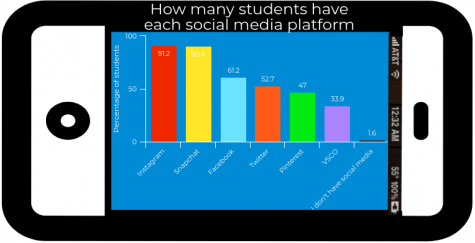
The data provided in these infographics was gathered from a survey that was sent to all LHS students via email and had 387 responses recorded.
